Affiliate links on Android Authority may earn us a commission. Learn more.
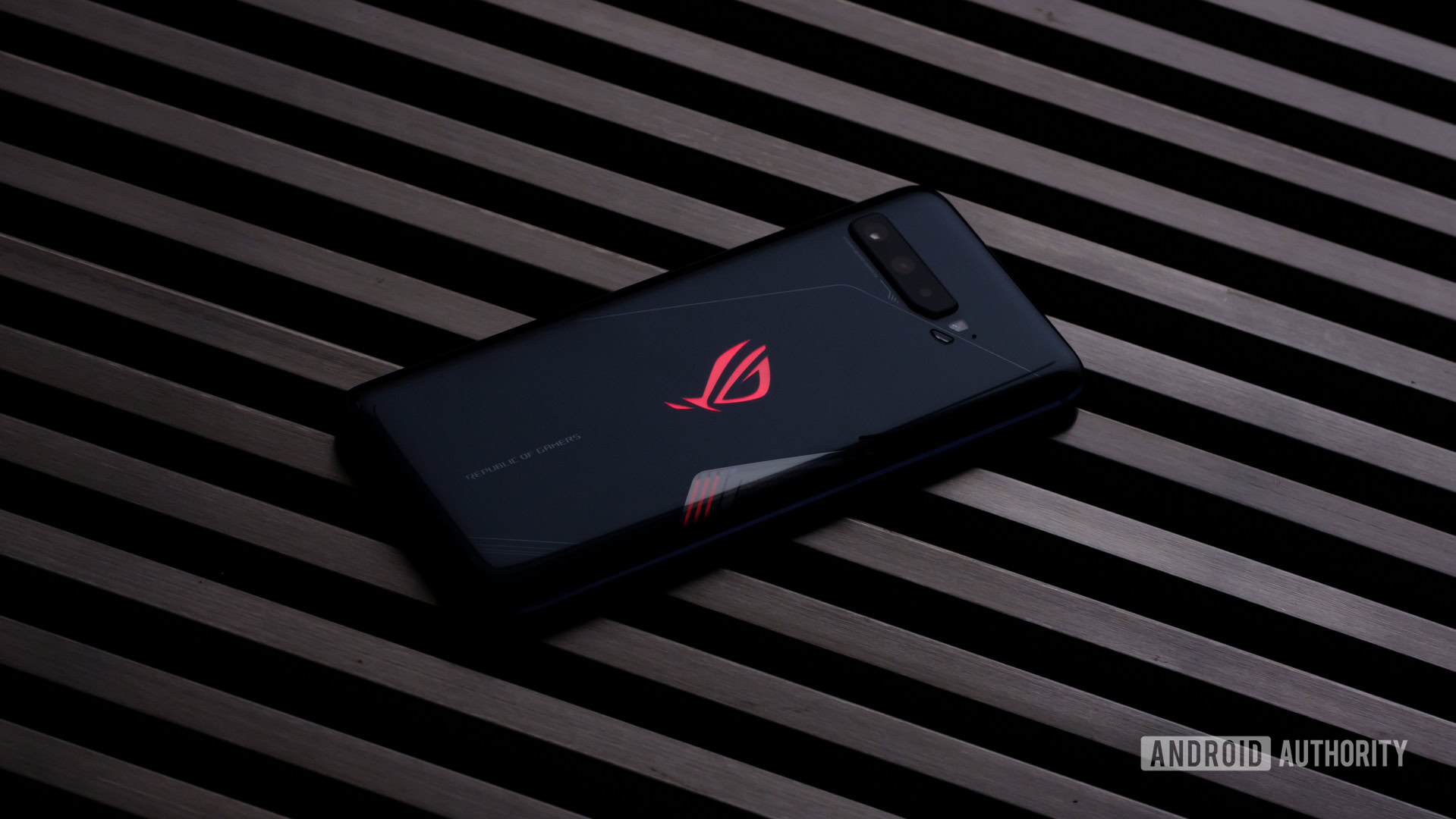


Asus ROG Phone 3
What we like
What we don't like
Our scores

Asus ROG Phone 3
ASUS is an enormous computer company. It makes nearly every PC component you could think of, from motherboards to RAM to monitors.
However, more recently, ASUS has become known for gaming. It makes gaming-branded laptops, monitors, mice, and even motherboards — all titled under the ROG (Republic of Gamers) masthead.
It felt only natural when ASUS decided to make the ROG Phone in 2018. It was a popular time for gaming phones, with devices such as the Razer Phone offering ramped-up specs and unique features that gave mobile gamers a competitive edge. ASUS wanted to go even further. It contracted Qualcomm to overclock the chipmaker’s flagship Snapdragon 845 processor to produce the fastest phone on the market at the time.
Then, ASUS followed up with a third-generation gaming phone in 2020, the fittingly named ROG Phone 3, once again bringing some of the best components available on the market. But do monster specs translate to a good experience?
Find out in the Android Authority ASUS ROG Phone 3 review.
Update, May 2021: ASUS rolled out its ROG phone 3 closed Android 11 beta, and the ROG Phone 5 is now available.
Design and display: Simple and quick

- 171 x 78 x 9.85mm, 240g
- Notification LED
- Aerodynamic system cooling fan
- Side-mounted air triggers
- Dual USB-C port (side)
- 6.59-inch AMOLED (2,340 x 1,080)
- 19.5:9 aspect ratio
- Small bezels (no notch)
- 144Hz refresh rate
- Stereo front-facing speakers
Even though the ROG Phone series design hasn’t changed drastically since 2018, its in-your-face styling has become more subtle with time. The first generation had bright orange accents with visible air vents, which became a single vent in the second generation. With the ROG Phone 3, ASUS opted for a transparent cooling chamber with fewer sharp lines.
The RGB-illuminated ROG logo is still present on the back of the phone. That’s a staple for the series, and I’m a sucker for RGB accents on any device.
Overall, the rear is quite clean, though that’s looking through the lens of other gaming devices. It’s still clearly a design targeted at gamers.
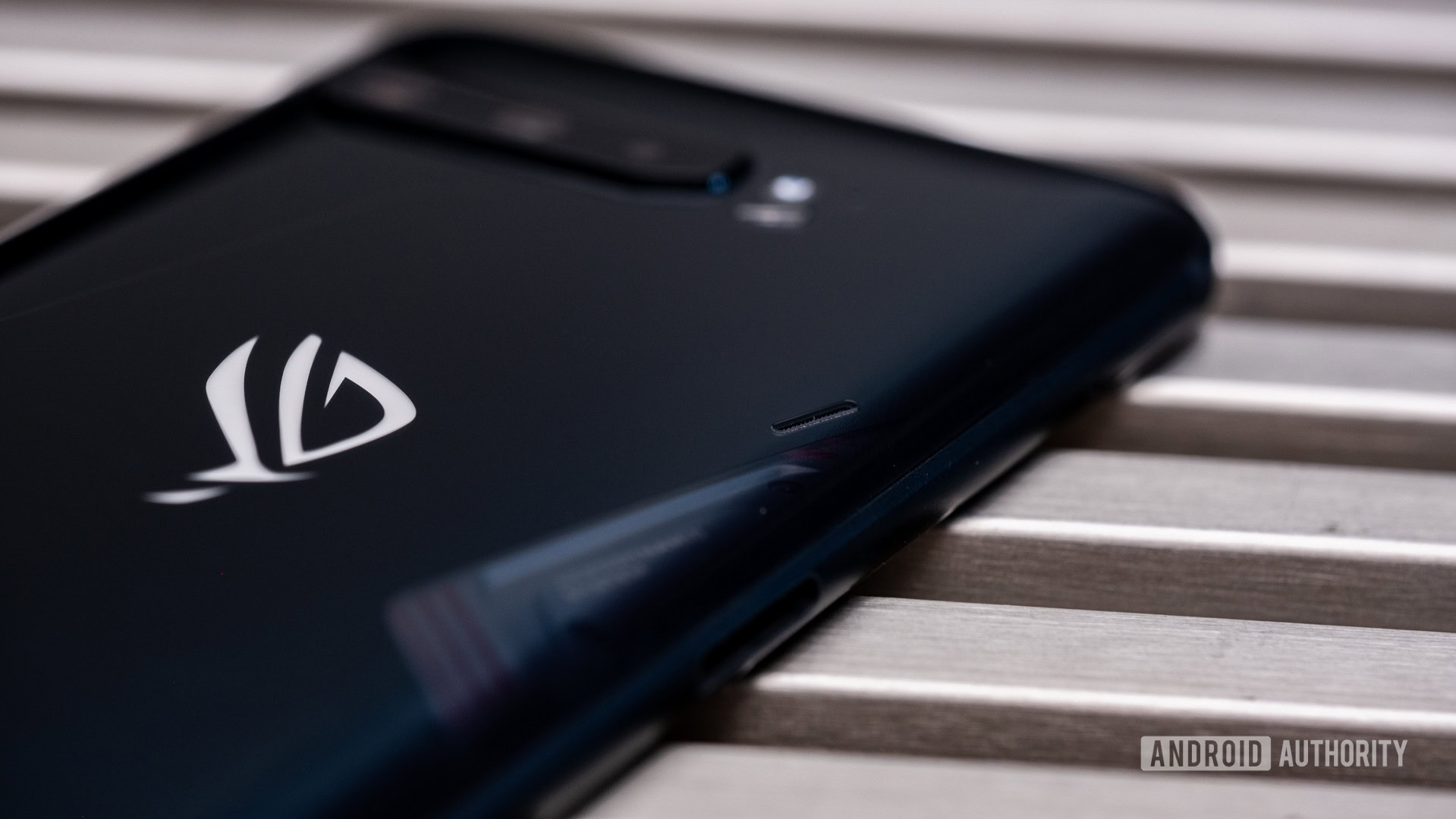
The body of the phone is housed in Gorilla Glass 6 with aluminum rails along the sides. Due to the vent on the back, the phone is not IP certified. While it will probably still be okay in sprinkling rain or mist, you should be careful with the device in wet circumstances.
The squared-off camera module is in the upper-left corner. Next to the camera module, you’ll find an LED for the flashlight and flash photography. Underneath the camera, you’ll find another RGB LED made to illuminate a special case that ASUS sells for the phone.
On the bottom of the phone, you’ll find a USB-C port shifted left of center. This is a bit of an odd design choice, but ASUS told me that it’s due to the particular motherboard design. There is no headphone jack on the bottom of the ROG Phone 3, unlike the first two ROG phones. This is apparently due to the extra space required by the X55 modem accompanying the Qualcomm Snapdragon 865 Plus.
On the left, you’ll find a special dual-socket USB-C port alongside a SIM card tray. You can plug the charger into the side of the phone for optimal positioning in landscape mode, something that I love. However, the port is actually positioned to support the AeroActive 3 cooling fan accessory, which will ship with the device in multiple regions.
This AeroActive fan helps cool the device while gaming in a special performance mode called X Mode. It also has an extra USB-C port and a headphone jack for charging and listening while gaming. The fan even has a kickstand this time around, which allows you to tilt the phone at a comfortable angle for either content consumption or gaming with a controller. An RGB ROG logo alongside an illuminated “Republic of Gamers” wordmark appears on the fan.
Carrying an additional accessory around isn’t the most optimal situation. However, it adds a better charging angle, a headphone jack, a kickstand, and cools the device makes it well worth the hassle.
See also: Best gaming laptops
ASUS also sells many other accessories for this device, just as it did for the ROG Phone 2. There is a gamepad that effectively turns your ROG Phone into a Nintendo Switch, a dock to use your ROG Phone 3 on a monitor with a mouse and keyboard, and a dock to hook the phone up to your TV. They’re all effectively the same as last year, with slight upgrades.
The top of the phone is void of any buttons or ports, but the right side is more interesting. While you’ll find the power button and volume rockers you’d expect, there are also some ultrasonic buttons called Air Triggers that can be used as buttons. In games like shooters, where you need your thumbs for navigation, it’s convenient to have these extra buttons easily accessible to your index fingers.
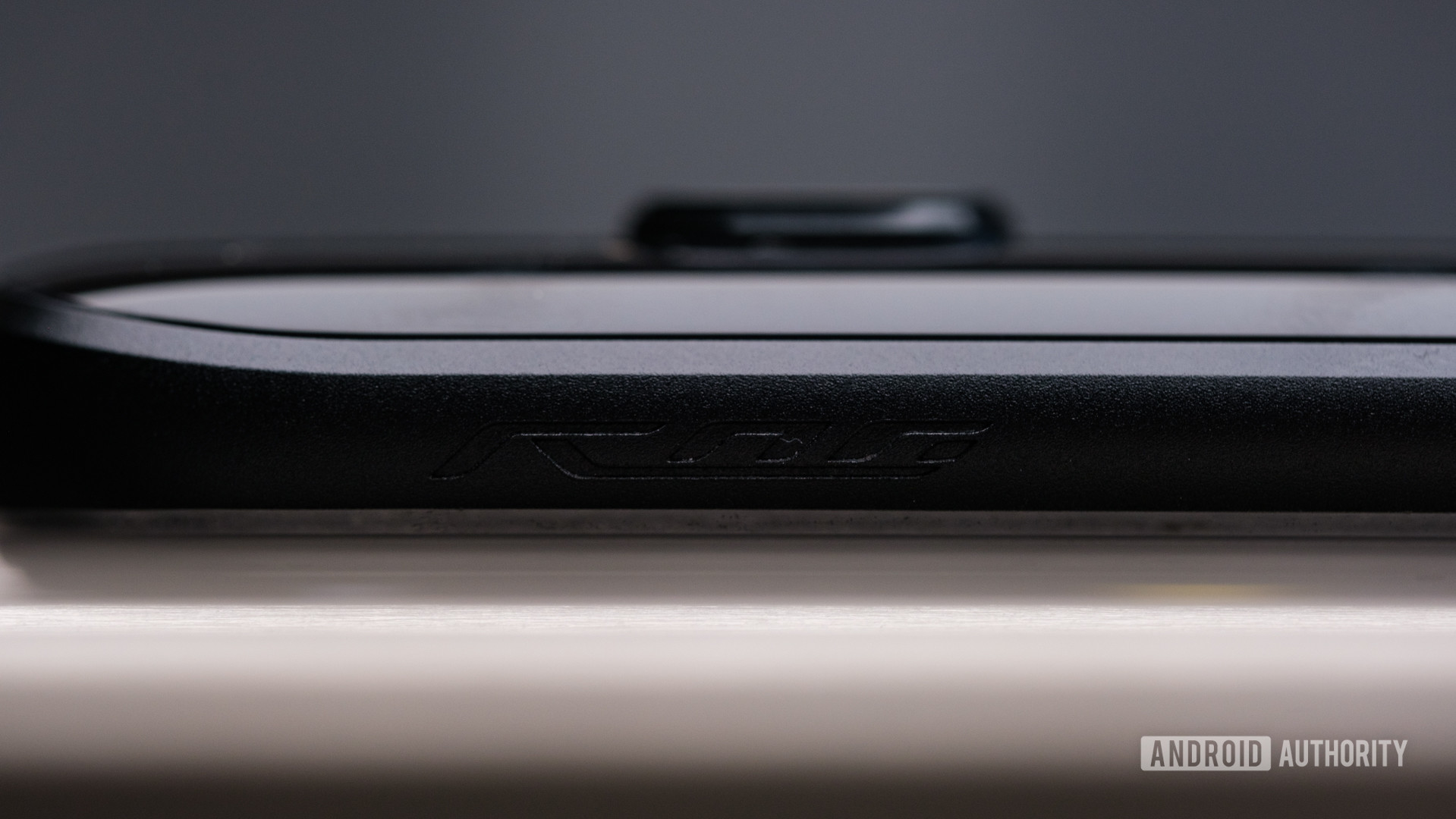
The front of the phone is just as interesting as the back. Instead of going with a notch or punch-hole display on this phone, ASUS opted for slim bezels, just like we saw on the ROG Phone 2. These bezels house the front-facing camera, RGB notification LED, and front-facing speakers tuned by Dirac, an audio company specializing in digital room correction and automotive audio solutions.
The speakers have been upgraded since the last model and now sport seven magnets for better bass response. I found these speakers to be really impressive. They got quite loud and didn’t feel distorted at higher volumes. The bass response was much better than most other smartphones, though it still lacked a bit of the punch you’ll get from a dedicated speaker. These aren’t replacements for a Bluetooth speaker with large drivers, but they are still very good for a smartphone.
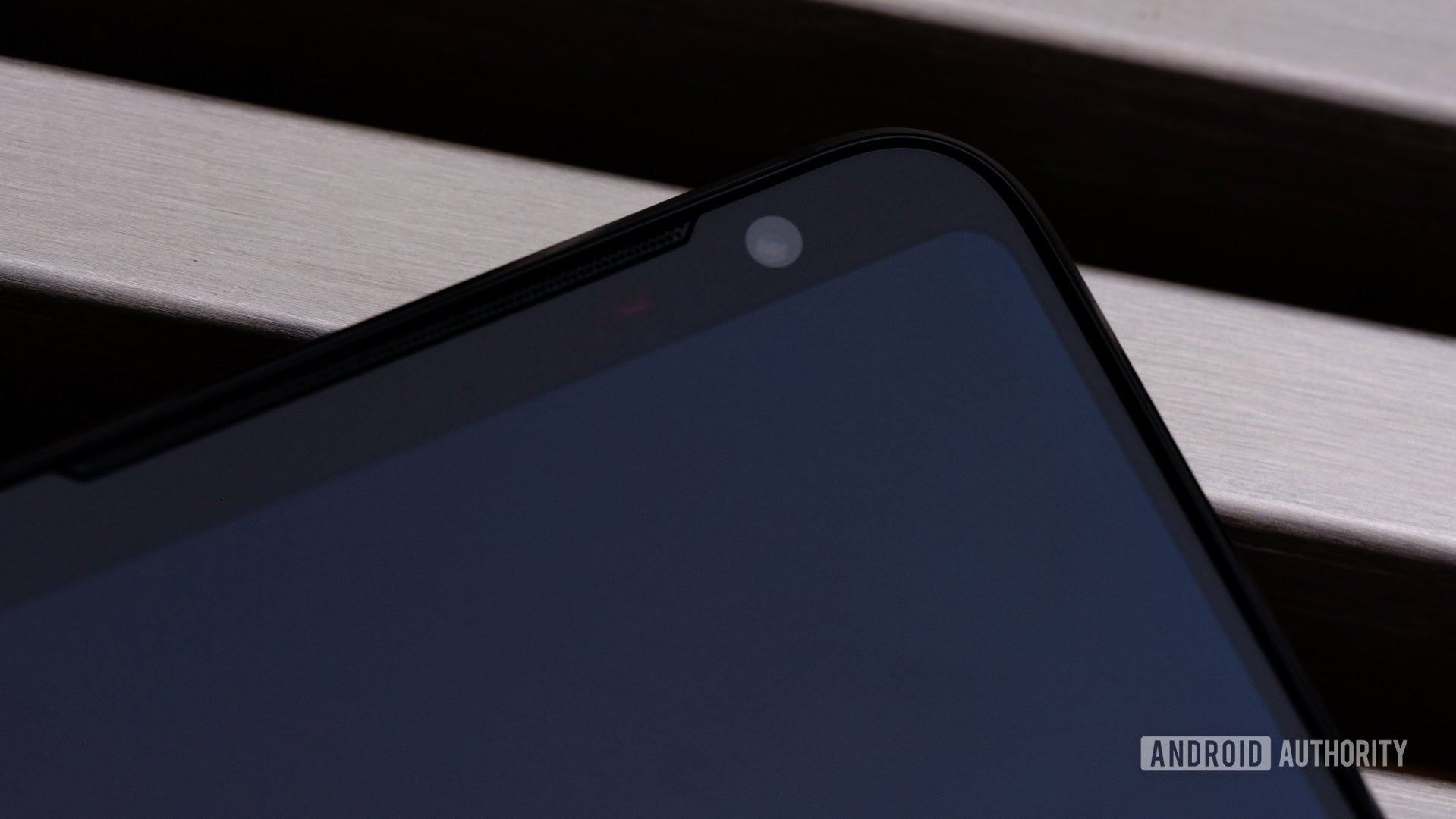
The first ROG Phone was one of the first phones to sport a 90Hz display. ASUS upgraded the second generation to 120Hz. Once mainstream flagships caught up in terms of refresh rate, ASUS upped the ante again: the ROG Phone 3 has a 144Hz panel.
The display carries over the 1ms response rate, but the touch sampling rate has been upgraded from 240Hz to 270Hz. In use, the phone feels lightning fast. After testing many 120Hz phones, I can’t say I can distinguish the difference between 120Hz and 144Hz. However, the fact that phones have achieved refresh rates like this — and more recently beyond into 165Hz — is insane.
Refresh rate explained: What does 60Hz, 90Hz, or 120Hz mean?
The 6.59-inch display has a resolution of 2,340 x 1,080. This isn’t the highest pixel count on a phone screen, but I’m happy to trade a 1,440 display for a 144Hz refresh rate.
The ROG Phone 3 doesn’t have the most accurate screen on the planet, but that’s not really its core purpose. It’s capable of 10-bit color and tuned to look as good as possible during gameplay. ASUS does provide several alternate profiles for the display, and we found the Cinematic profile to be more color-accurate if you prefer to use the device for watching movies.
Performance and battery: 2020’s best

- Qualcomm Snapdragon 865 Plus
- X55 5G mobile platform (No mmWave)
- 8-16GB RAM
- 128-512GB storage
- No microSD card expansion
- 6,000mAh battery
- 30W Quick charging
- No wireless charging
ASUS was one of the first phone makers to use an overclocked processor from Qualcomm, starting with the custom Snapdragon 845 in the original ROG Phone. Since then, Qualcomm has spun these chips into a unique SKU under the name of Plus. These hot-rodded chips are now available to any device maker that wants to use them.
The ROG Phone 3 uses the Qualcomm Snapdragon 865 Plus, which overclocks the CPU prime core to 3.1GHz. This made it one of the absolute fastest phones on the market in 2020, especially when paired with the super-fast UFS 3.1 storage and GDDR5 RAM. Now, it’s been surpassed by its own successor with its Snapdragon 888 chip, but we can’t hold that against it. The ROG Phone 3 is still plenty powerful even today.
The ROG Phone 3 slayed in benchmarks, which was to be expected. The ROG Phone 3 notched a score of 4,520 in Geekbench 4 single-core and 13,367 in multi-core. In comparison, the OnePlus 8 Pro scored 4,195 and 13,142 in Geekbench 4 single- and multi-core tests, respectively. The scores firmly secured the ROG Phone 3 as the fastest phone we had ever tested at the original time of review. It may have lost that crown now, but it remains close to the very top when pushed to its limits, as our Speed Test G benchmark rankings attest.
When testing phones, we run a custom benchmark to get a sense of performance over time and battery life. While chatting with ASUS about X Mode, company representatives mentioned that it is designed to force sustained performance over time instead of the boosting and throttling you would normally see in daily use. This is especially useful during long gaming sessions when it’s important to maintain a consistent frame rate for hours at a time.
I ran our custom benchmark on the ROG Phone 3 in standard mode with no attachment and X Mode with ASUS’ included AeroActive cooler. ASUS’ claims matched our results to a tee. X Mode with the AeroActive cooler did a fantastic job of stabilizing performance over a long period.
The ROG Phone 3 ships in a couple of variants, with up to 16GB of RAM and 512GB of storage. Considering ASUS sells an accessory that allows you to use the phone with a monitor, mouse, and keyboard, you could seriously use this as a PC as well as a phone. That’s wild.
Battery life on the ASUS ROG Phone 3 was a bit of a mixed bag in real-world testing. The phone sports a monstrous 6,000mAh battery, so you would think it would get equally monstrous battery life. On some days, it did. The best battery life I got on the ROG Phone 3 was nine hours and 21 minutes of screen-on time with 5% battery left. Other days it was closer to seven hours. Both values are still excellent, and I easily got about a day and a half in normal use, and sometimes two full days. However, it’s strange that battery life seemed so inconsistent. I assume this is due to the variable refresh rate on the device.
The ROG Phone 3 ships with a 30W charger, which can juice up the phone fairly quickly, considering how large the battery is. In my testing, the phone charged 51% in 30 minutes and 87% in one hour. It took the phone 107 minutes to charge to maximum capacity, but that’s because it will slow down charging once it gets closer to full. Still, 6,000mAh!
Camera: Much better than I expected
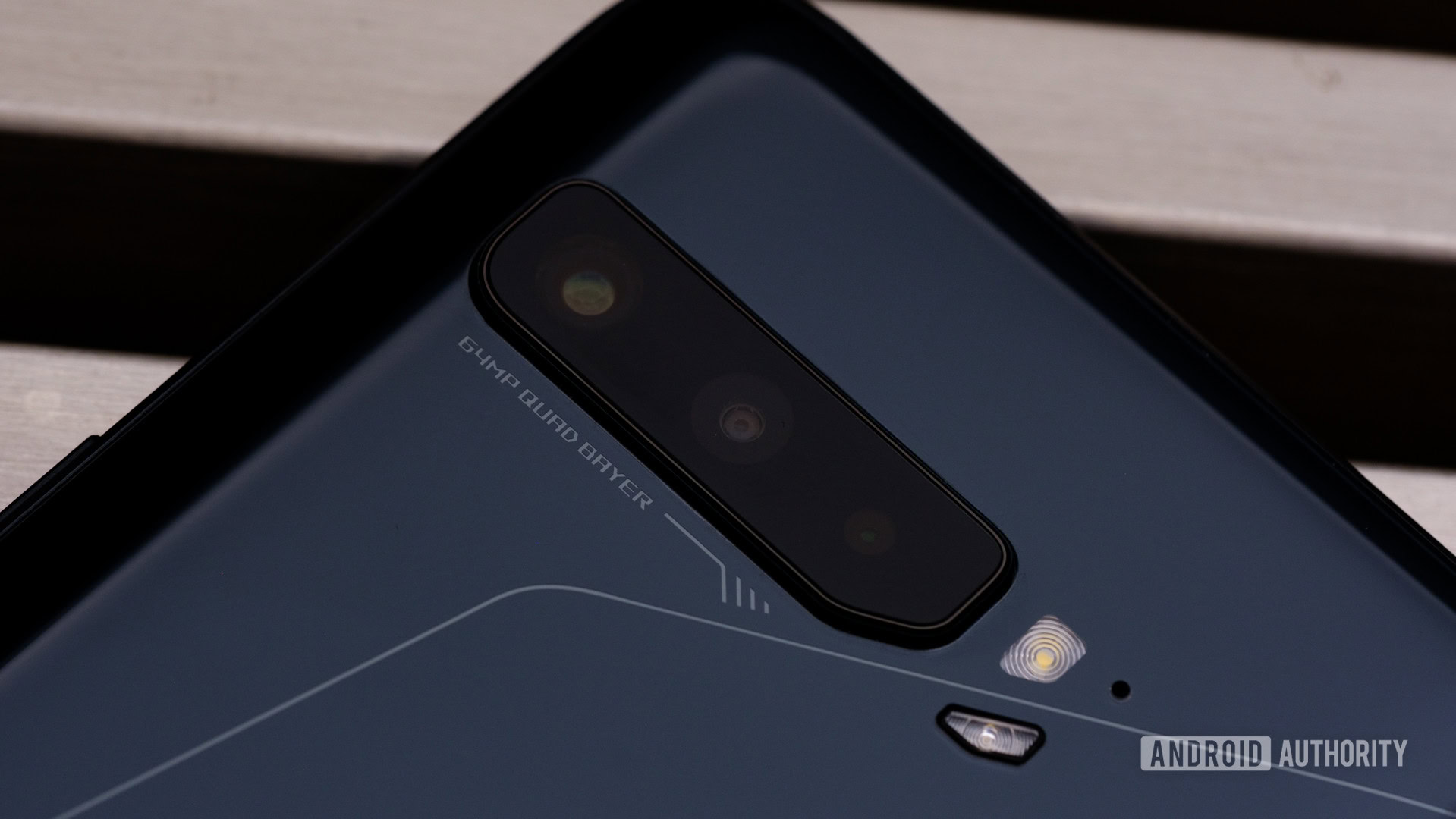
- Main: 64MP
- Wide: 13MP
- Macro: 5MP
- Selfie: 24MP
Obviously, the camera system on a gaming phone isn’t a priority for the manufacturer. That said, I was surprised at how good the images from the ROG Phone 3 were.
The main sensor in the ROG Phone 3 is the 64MP Sony IMX686. Images from this sensor had great color and good dynamic range. They showed a decent amount of shadow detail without looking washed out.
This camera system was way better than I was expecting.
Most images retained a great amount of highlight detail, though the phone struggled just a bit when there was a lot of contrast in the scene. To maintain detail, the system gave highlights an almost hazy look, which isn’t necessarily bad. There was also a decent amount of natural depth-of-field in photos.
Overall, I was incredibly impressed with this camera. I wasn’t expecting these results from a gaming phone.
The wide-angle sensor had a similar color profile to the main sensor, which is nice to see. It also maintained a fair amount of both highlight and shadow detail. The sensor did tend to look a bit splotchy in some situations, though. It was unable to render as smooth a gradient between images compared to the main sensor. Still, it was better than I was expecting.
Images from the 5MP macro camera look pretty decent. The color and contrast were good, and the pictures were plenty sharp.
The selfie camera is 24MP, and it offers up very good selfies. Color and sharpness were especially good, even in dimmer situations.
The photos shown here have been compressed for optimal page load times. If you’d like to view the full-resolution images, I’ve made them available here.
The ROG Phone 3 can also shoot 8K video. Video from this sensor is also quite good, with great dynamic range. The phone was also surprisingly stable while recording 8K, considering there is no software stabilization here. I’m impressed.
The camera app on the ASUS ROG Phone 3 is fairly simple, with the main settings accessible via carousel at the bottom. Head into the settings, though, and you’ll find a ton of options that are seemingly randomly placed. While I appreciate ASUS giving users access to all these features, it would be nice if the layout was more intuitive.
Software: Simple mode vs Gamer mode
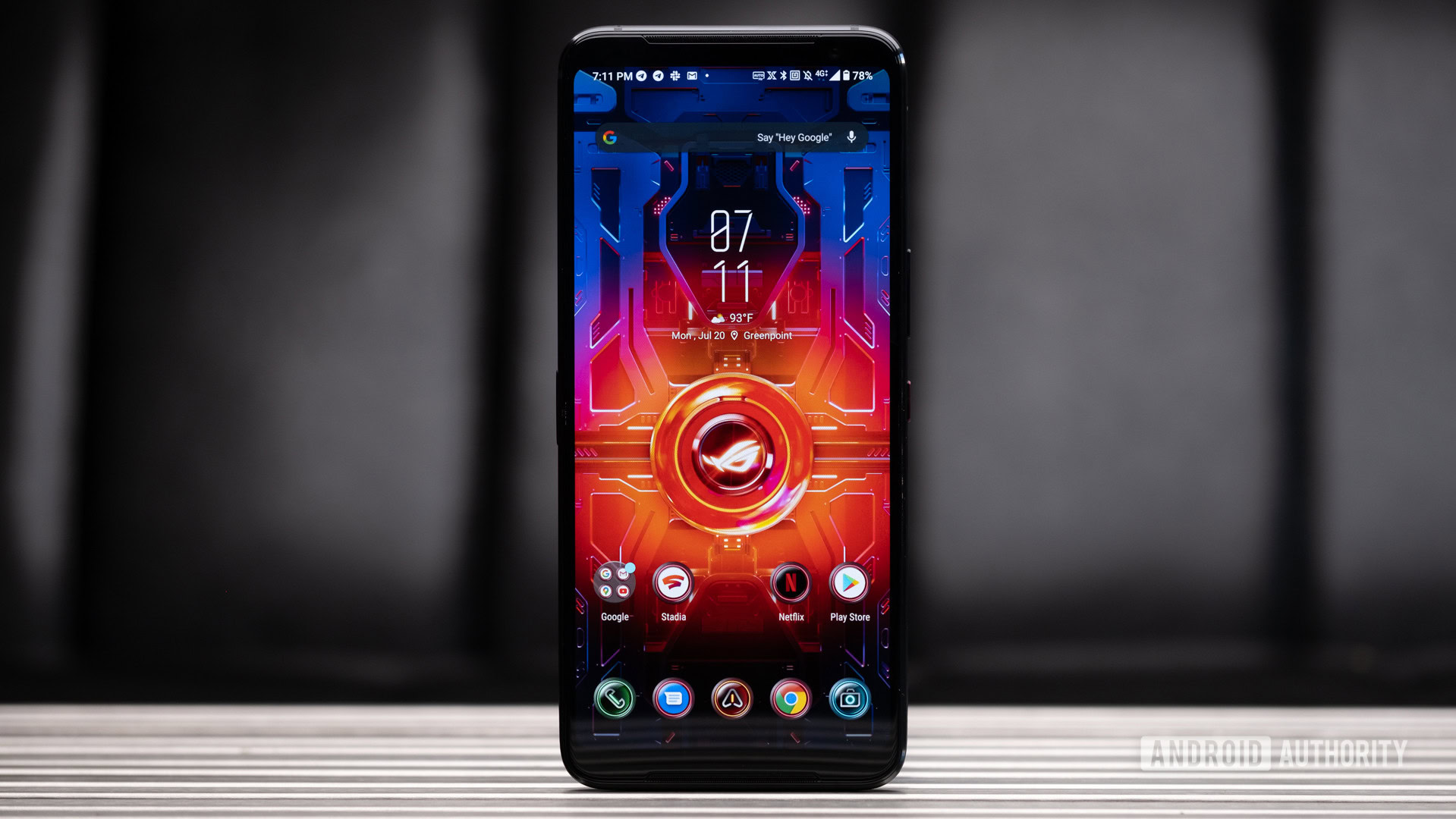
- Android 10 (in Android 11 closed beta)
- ASUS Launcher
ASUS completely redesigned its launcher to be minimalistic during 2019. The launcher was closer to stock Android but added a few features useful to users, like built-in screen recording. ASUS later gave the ROG Phone 2 that same minimal launcher as an option. Now it’s back with the ROG Phone 3.
Unfortunately, the ROG Phone 3 is still running on Android 11 almost 10 months after launch. ASUS hasn’t had a great track record with speedy updates, so this isn’t entirely unexpected. As of April 2021, ASUS had reached its second round of closed Android 11 beta testing, so hopefully, a full rollout is just around the corner.
When you set up the phone, you’re met with four distinct styles for your launcher. There are three different ROG themes built-in, each with its own aggressive-looking, gamer-y wallpapers, and icons. You’ll also get an option for the Classic theme, the minimalistic version of ZenUI you’ll find on the Zenfone 6, now called ASUS Launcher. While the themes don’t change the phone’s functionality, some, like the one called Quantum Infinity Core, will animate and change color when you enter X Mode.
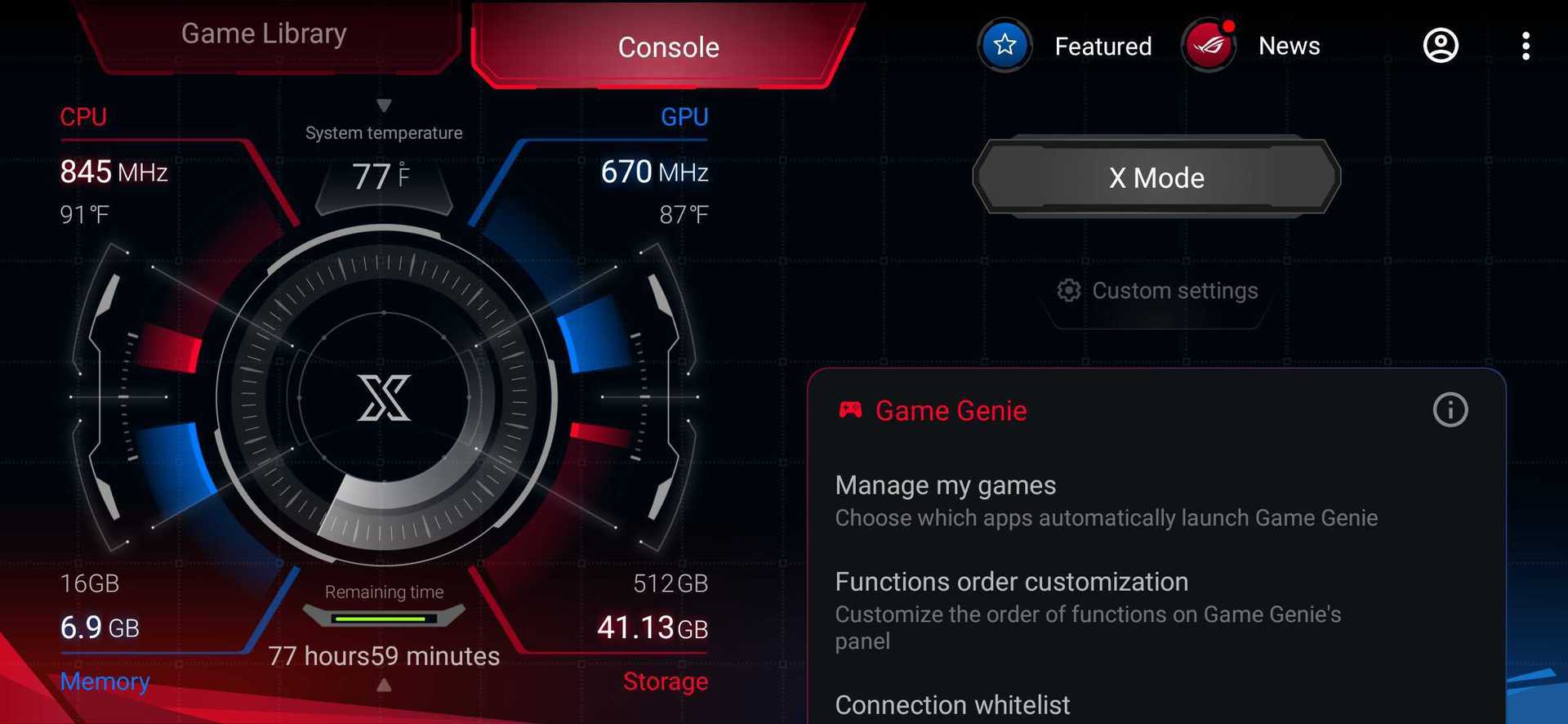
X Mode is a special profile on the device that ramps up performance and sustains a high clock speed for the best gaming experience. You can tweak the exact settings of X Mode in ASUS’ Game Genie app, where you’ll also have the ability to change the RGB backlight of the ROG logo on the back of the device, toggle fan speed settings, and even adjust preferences of the Air Triggers.
ASUS gives you an insane level of control over every aspect of your device, even allowing you to tweak the clock speed of each core. You can think of this sort of like a BIOS console on a PC, giving you deep control over settings. It’s pretty nuts.
Most people will be fine using the built-in profiles ASUS has set for game performance. For those who love to tweak things, it’s pretty incredible how much control ASUS offers. I’m a fan.
Back again with the ROG 3 are the Air Triggers that we saw in older ROG Phones. These are touch-sensitive spots on the chassis that allow you to map touch inputs to the sides of your device. This year ASUS took them further and added even more functionality. ASUS broke the triggers into two partitions on either side, giving you unique settings for up to four virtual buttons with a tap. Moreover, there are now settings for slide and swipe gestures, giving you up to eight different functions. As a friend of mine who plays a lot of Fornite on mobile put it, “That’s OP as hell.”
Playing around with Game Genie and the Air Triggers on the ROG Phone 3, it’s clear ASUS put a ton of work into this software. You can create custom Air Trigger profiles for each game, so you won’t have to set it up again each time. Game Genie also lets you stop messages, record gameplay, add a crosshair, make macros, and more. If you’re a big mobile gamer, it’s hard to imagine it gets better than this.
On October 13, 2020, ASUS released an over-the-air software update, enabling Dirac’s headphone optimization technology. This means that your headphones’ frequency response is upgraded to reproduce accurate audio. This promotes clear audio and lets you hear in-game cues like enemy footsteps. These are the compatible headsets: ROG Cetra, ROG Cetra Core, ROG Cetra RGB, ROG Delta, ROG Delta Core, ROG Delta White Edition, ROG Strix Go 2.4, ROG StrixFusion 300, ROG Strix Fusion 300 PNK LTD, ROG Theta Electret, and ROG Theta 7.1.
See also: Best gaming speakers
ASUS ROG Phone 3 specs
| ASUS ROG Phone 3 | |
|---|---|
Display | 6.59-inch AMOLED 144Hz refresh rate 1ms response time 270Hz touch sampling rate 113% DCI-P3 Color 10-bit HDR Gorilla Glass 6 |
Processor | Qualcomm Snapdragon 865 Plus @ 3.1Ghz |
RAM | 12/16GB (standard edition) 8GB (Strix Edition) LPDDR5 |
Storage | 512GB (standard edition) 256GB (Strix Edition) UFS 3.1 |
MicroSD | No |
Battery | 6,000mAh 30W fast charging |
Cameras | Rear: 64MP Sony IMX686 sensor 13MP ultra-wide sensor 5MP macro sensor Front: 24MP sensor |
IP rating | No |
Headphone jack | No |
Connectivity | 802.11ax Wi-Fi (four antennas) Bluetooth 5 GPS |
Sensors | Accelerometer Ambient light E-compass Gyroscope Hall In-display fingerprint Proximity Ultrasonic air triggers |
Software | Android 10 ASUS UI |
Dimensions and weight | 171 x 78 x 9.85mm 240g |
Colors | Black |
Value and competition
- ASUS ROG Phone 3: 12GB RAM, 512GB Storage — $999/€999
At $999, the ASUS ROG Phone 3 certainly wasn’t cheap at launch. It was ASUS’ first phone with the Snapdragon 865 Plus processor, had up to 16GB of RAM and 512GB of wicked fast storage. More importantly, it had a huge number of features that gamers and non-gamers alike would enjoy, such as the 144Hz display, a 6,000mAh battery, and a great set of cameras. Add the minimal UI as an option alongside the more gamer-centric interface, and this thing was hard to beat.
It’s still a decent buy today too, especially as the phone is regularly discounted to around the $800 mark.
To get a flagship Samsung Galaxy S21 Ultra, you’d have to pay over $1,000 for a near equivalent list of specs. However, you’d get the newer Snapdragon 888 processor as a trade-off. The ROG Phone 3 will likely suit you better in gaming situations, but it’s not the Galaxy’s top rival.
The ASUS ROG Phone 3 offers a ton for the money, especially if you can find one on sale.
Instead, your best competition is the newer ASUS ROG Phone 5. It fine-tunes many aspects that made the ROG Phone 3 great and boosts them with a better processor and an impressive main camera. The brilliant speakers and Quad DAC are tough to match, but you still won’t get an IP rating or wireless charging.
If you’re determined to get an IP68 rating and a headphone jack, we might suggest looking at the Sony Xperia 1 II, which sports a higher resolution, but lower refresh rate, 60Hz 4K display. You could also sit tight and wait for the newly announced Xperia 1 III with its crop of 2021 upgrades.
If you want to stick to a gaming powerhouse, your best bets are the Black Shark 4 family and the REDMAGIC 6 line. Both offer some signature gaming flair, though the vanilla Black Shark 4 drops down to a Snapdragon 870 processor, which benchmarks at around the same as the Snapdragon 865 Plus. You can grab up to 12GB of RAM and 256GB of storage space, though the REDMAGIC 6 has a larger 5,050mAh battery.
Ultimately, the ASUS ROG Phone 3 offered a ton for your 2020 money and is still a good buy today — if you can find it on sale. While it doesn’t have common features like water resistance, wireless charging, or a built-in headphone jack, it trades these things for innovative Air Triggers and uncompromising performance.
ASUS ROG Phone 3 review: Should you buy it?
ASUS came into its own with the ROG Phone 3. While it won’t attract mainstream consumers due to its clear gamer design and lack of carrier availability, the phone still punches far above its price point, even for a €999 device.
If you’re looking for a slim or stylish device, the ROG Phone 3 probably won’t meet your criteria. But if you’re looking for great performance, great cameras, a big battery, and a decent UI, the ROG Phone 3 will serve you fantastically if you can find one on sale. If not, be sure to check out the ROG Phone 5 instead.
